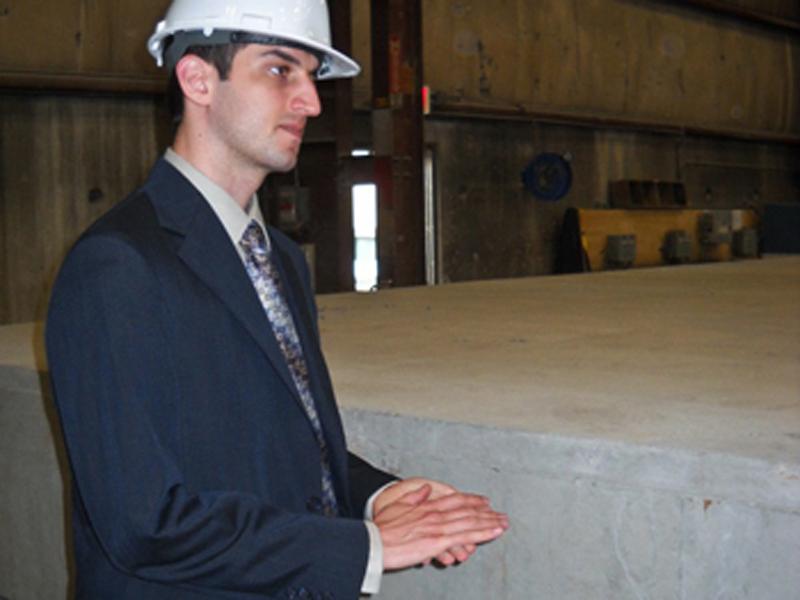University professor developing environmentally conscious cement
Professor Alex Moseson is trying to develop an environmentally friendly recipe for cement. (Photo courtesy of Alex Moseson.)
About two tons of concrete are poured for every person in the world — each year.
After water, it’s the most used material on the planet. But it’s also a major source of pollution. Making concrete leads to tons of carbon dioxide.
“It produces up to about five percent of the world’s greenhouse gas emissions in total from the CO2 released from making, not just the concrete, but really just from the cement that is used as the glue, the binder, that makes concrete possible,” said Alex Moseson, a mechanical engineering professor at Drexel University.
The carbon dioxide happens because cement is made by melting — at extreme temperatures — solid rock. In order to get the heat necessary, 1500 degrees, a lot of fuel must be burned. Another, smaller source of CO2 is the process of converting limestone into lime, which is also a component of cement.
But Moseson and his students are trying to make things a little greener, by cooking up a new recipe for Green Cement.
“The beauty of it is we can take things that don’t need to go through a kiln in order to make them cement,” Moseson said. “So one of our investors had said: ‘Hey, it sounds like you figured out how to bake bread without an oven.’ Which is right.”
Normally, when making cement, heat is used to turn stone into power and then back into stone, when mixed with certain additives. But Moseson’s recipe involves using an alkali chemical, like soda ash to break things down.
“The idea is: we have a pinch of that alkali, and then we need something to activate. What we’re using are generally industrial byproducts, the leftovers from making iron out of iron ore, or the ashes left over from making power from coal,” Moseson said.
So far, indications are not only does this process work, without the heat that produces so much CO2, but it’s actually producing a higher quality cement.
“We’re looking at important metrics that everyone is familiar with such as strength and durability,” Moseson said. “Resistance to things like acid attack, resistance to the salt attack if you’re in a marine environment. There’s also interesting features that it’s better at containing waste, even things all the way up to nuclear waste.”
It’s also competitive on the cost front, though thus far there hasn’t been a giant movement to switch from traditional Portland Cement to Moseson’s Green cement. And the professor says there are three key reasons why.
First, is impurities in the source material. While the recipe uses industrial waste as a key ingredient, not all industrial waste is created equal. In order to achieve the structural strength, all of the ingredients need to be in perfect balance. Second, they haven’t quite perfected the recipe the point that it does everything as well as or better than Portland Cement — at the same time. So while they can make it stronger, and they can make it set slowly enough, doing those at the same time is more difficult. Lastly, they still don’t have regulatory approval — something they’re working toward.
“We’re looking at making sure the cement is safe to use and that it does last as long as we think it’s going to. And this is a real issue to overcome because the cement that we know and love has been used for 100 years,” Moseson said. “So, we want to introduce this into the marketplace in the right way.”
But there’s reason for hope. The recipe that Moseson uses bears somewhat or a resemblance to what some scientists believe is the recipe used to construct the pyramids.
And those have certainly stood the test of time.
